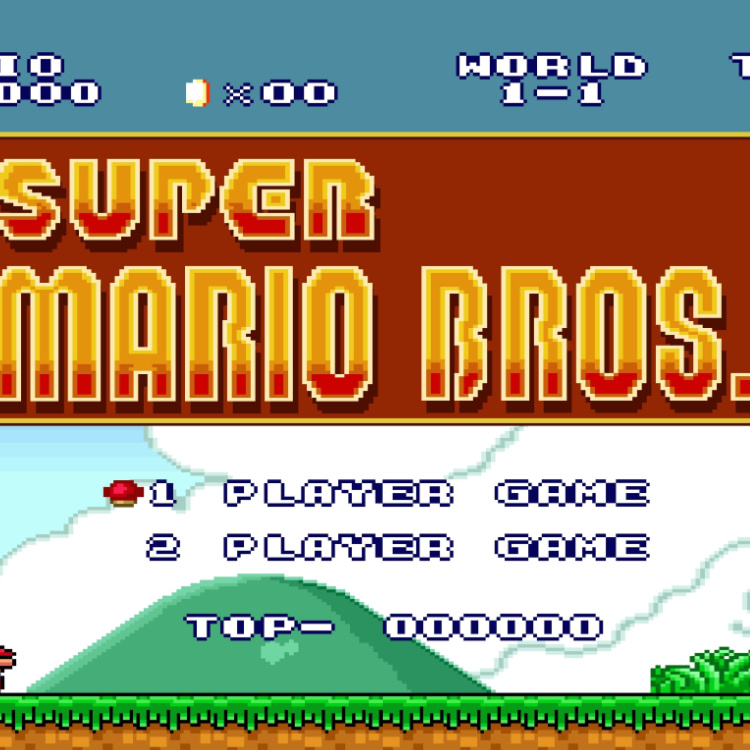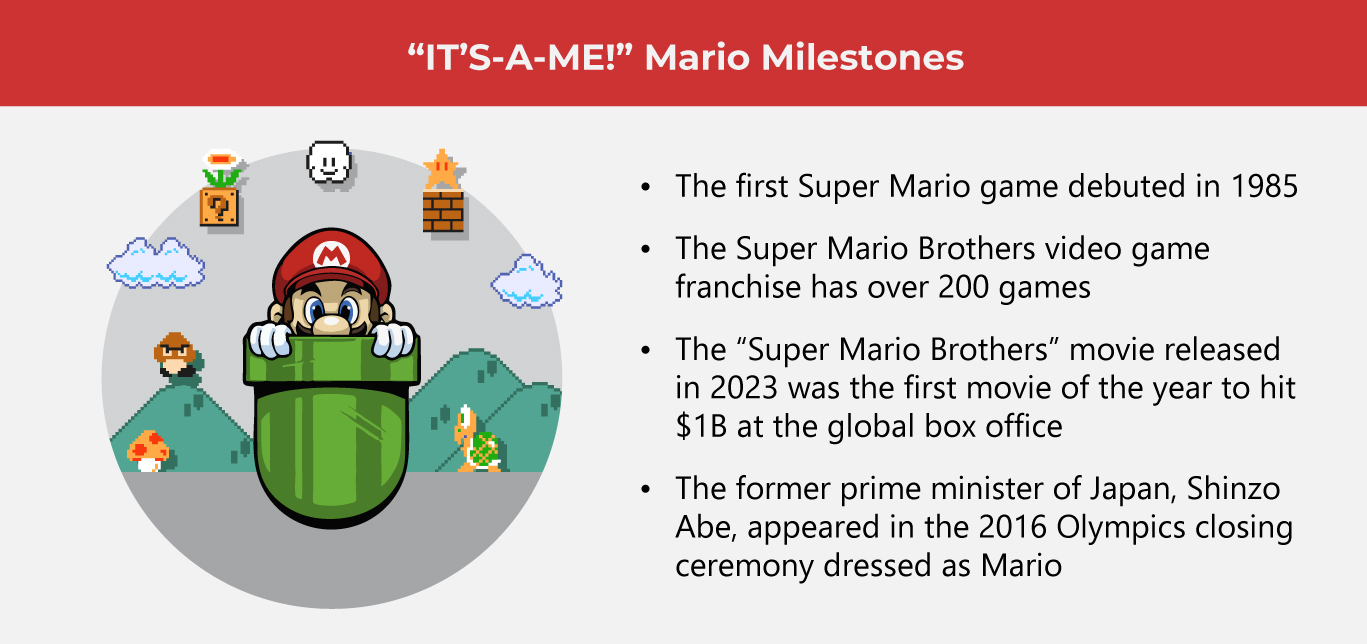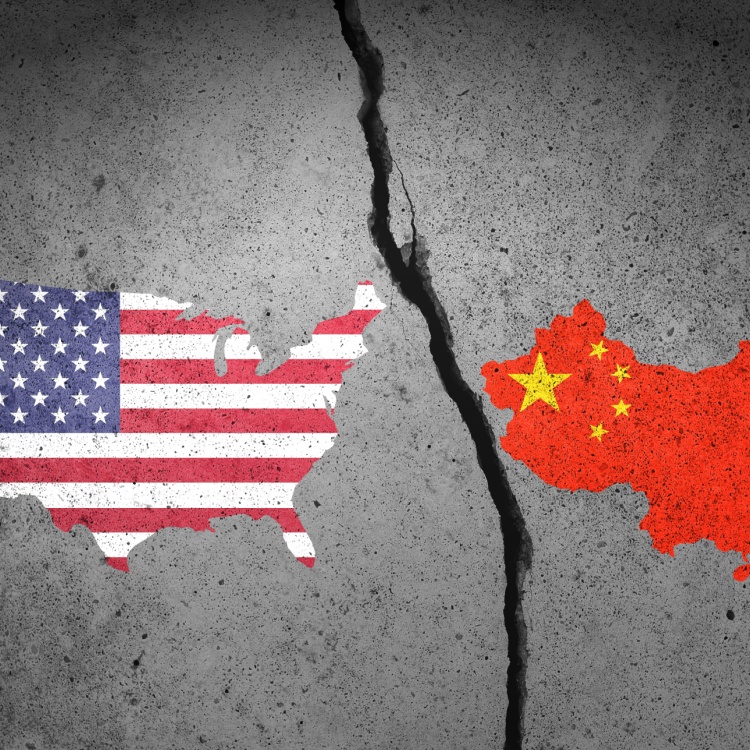Why the World Still Loves Super Mario Brothers

It’s been almost forty years since the original Super Mario Brothers game debuted and changed the world of video games forever.
Go on, close your eyes. Now what comes to your mind’s eye when you hear someone mention the name “Mario”? If an infinitely cheerful, short, stout, mustachioed Italian plumber in bright red overalls and a jaunty cap comes to mind, well, you won’t be alone!
That’s a mark of a true icon: immediate recognition, persistent recall, and automatic association. Bonus points awarded to you if you’ve never even played a single Super Mario Brothers game in your life!
Today, Mario is one of the most beloved icons not only in the world of video games but in popular culture.
Apart from video games, Mario has appeared on TV shows, movies, cartoons, clothing, and even memes. His catchphrase “It’s-a-me!” has been embedded in our collective consciousness.
This year saw the release of a brand-new Super Mario Brothers film starring Jack Black, and there’s even a new Super Mario Brothers game set for release in October 2023!
Studies have been done about Mario as a cultural and economic phenomenon. Today, the whole world is still wild for Super Mario Brothers, and it’s worth taking a look at some of the reasons why.
(Also Read: The Video Game That Saves Our Sanity)
From gambling cards to video game gold
Super Mario Brothers is the title that put Nintendo on the map.
The company itself is older than we think it is. Established in 1889 (yes, folks that’s 1889, not 1989!) as a company that printed gambling cards called harafusa, it was its founder’s grandson, Hiroshi Yamauchi who made Nintendo the company we know it to be today.
Young Yamauchi-san was inspired by video games made by Atari in the 1970s and set out to create his own video game consoles. After a few not-so-successful ventures into arcade gaming consoles, he broke into the American market with the Nintendo Entertainment System (NES), or as it’s known outside of the U.S., the Family Computer. In Japan, the console was called “Famicon”.
Mario’s creator is Shigeru Miyamoto, who also created the seminal video game, “Donkey Kong.” Its concept was simple: save a princess from a kidnapping gorilla named Kong. The game’s success is arguable. Some say it was a flop, but others consider it a classic.
The game would be instrumental in planting the seeds for what Super Mario Brothers would become.
Nintendo’s goal was to create a side-scrolling video game for the NES. It had to be simple, yet engaging; challenging, yet addictive.
Taking off from “Donkey Kong’s simple premise, Nintendo refined the game’s concept and then added innovations to the gameplay such as running, jumping, collecting coins, and power-ups.
Not only was it the perfect formula, it set the gold standard for games to follow.
In the beginning, Mario was called “Jumpman”, and he resembled more of a carpenter than a plumber. So, how did he come to be named Mario?
The character design was informed largely by the limitations of computer graphics in the early 1980s, the era of 2-dimensional 8-bit pixel video games.
Mario’s mustache was added to distinguish the character’s facial features, particularly, to tell his nose from his chin. His cap was added to address problems with a character’s hair with only a few pixels to play with, and his bright red suit was created for contrast against a black background.
And his name? It’s a funny story. Nintendo’s American office was located in New Jersey in the 1980s, and one day, their building landlord paid them a visit because their rent was coming in late. The landlord’s name was Mario Segale. And yes, he had a mustache.
And the rest, as they say, is video game history.
Super Mario Brothers and “Cultural Globalization”
Over two hundred games later (including discontinued and Japan-exclusive titles), Mario has become a global ambassador for fun, games, beating up mushrooms, and leveling up.
Its trademarks such as the in-game sound effects and musical scoring have become touchstones of many people’s childhoods. Hearing the catchy electronic musical cues takes people back to simpler times in front of their Family Computers on Saturday mornings rescuing Princess Peach.
It had an equally iconic and memorable main villain: Bowser, the turtle-like creature also known as King Koopa.
Its unique world is supremely playable from the get-go. There’s very little explaining or set-up needed when one is handed the video game controls, even if one has never played any other game before. How does one play? Easy. Make Mario run, jump, collect coins, and avoid dying.
Nintendo has taken its simple yet engaging side-scrolling platform game and re-invented it to become one of the world’s best-selling video games of all time.
The titular character Mario is a video game character that everyone can relate to. He is an ordinary plumber after all, but he gets to go on an adventure to save a princess while collecting rewards in a magical world.
Pacific Standard Magazine called Mario a great example of “cultural globalization”. It’s a process where “ideas, meanings, and values are shared on a global level in a way that intensifies social relations.” From Japan to the U.S., and in other parts of the video gaming world, Mario is loved everywhere.
The original Super Mario Brothers game was undeniable fun, and it followed the principle of “leveling up”, which meant that as the player improved, the game level got more challenging, motivating the player to keep going and get more rewards.
As the NES’s popularity faded and newer, more advanced gaming consoles were introduced to the market, so did new Mario titles.
What was genius about Super Mario Brothers was that even though its previous platforms may have gone obsolete, its core principles remained as playable as ever. With innovations being added to its user interface and animation, the games became more refined, its environments more detailed, and the Mushroom Kingdom’s world-building more realized.
With the new Super Mario Brothers game, “Super Mario Brothers Wonder” set for release on the Nintendo Switch, fans and new players alike will be treated to even more innovations that keep playing fresh.
Its developers say that “Super Mario Brothers Wonder” offers players more freedom to decide on the levels to play. Instead of mastery of levels, players will be given more flexibility to choose which level to play first.
There are other new things to look forward to, also apart from this. For example, there will be new playable characters and the game introduces badges that give players special abilities such as invisibility.
Though “Super Mario Brothers Wonder” comes with these new bells and whistles, its game developers want players to know that the new game sticks to its core values of keeping the game straightforward, with its full Mario “it’s-a-me”-ness intact.
From 8-bits to megapixels, Super Mario has broken through many digital eras with his indefatigable can-do attitude and pluck. Through various gaming consoles across the decades, Super Mario remains triumphant and undefeated. 
As one of the Top 20 EMS companies in the world, IMI has over 40 years of experience in providing electronics manufacturing and technology solutions.
We are ready to support your business on a global scale.
Our proven technical expertise, worldwide reach, and vast experience in high-growth and emerging markets make us the ideal global manufacturing solutions partner.
Let's work together to build our future today.
Other Blog


